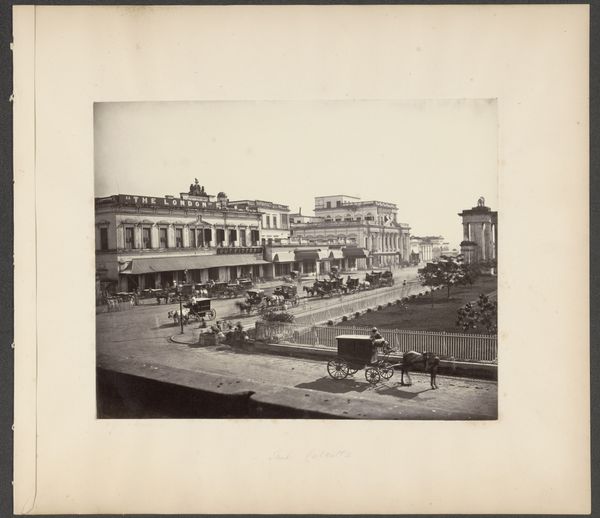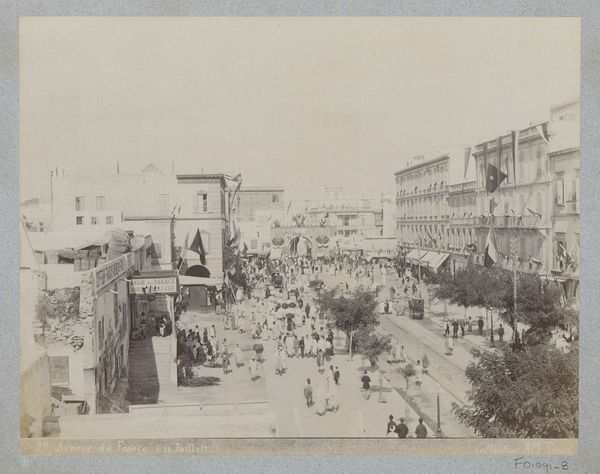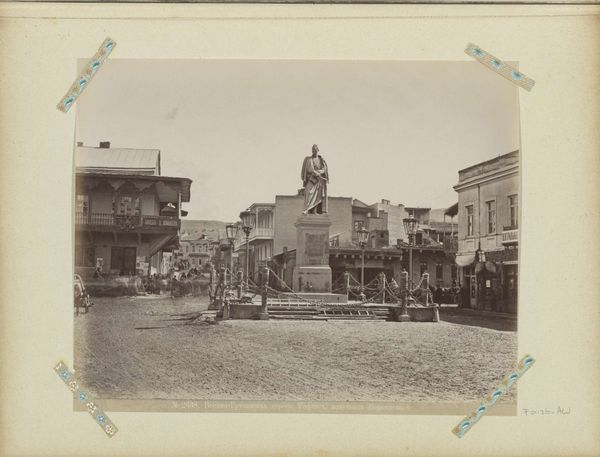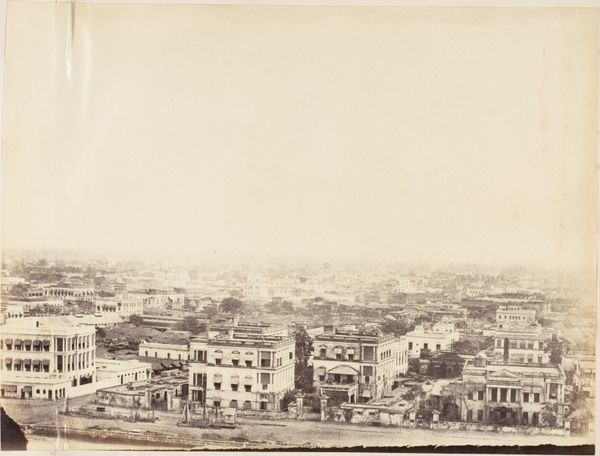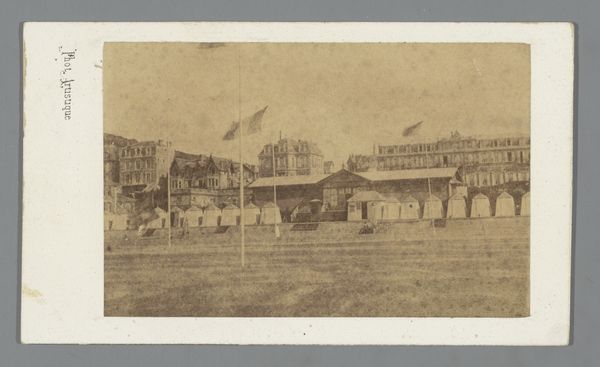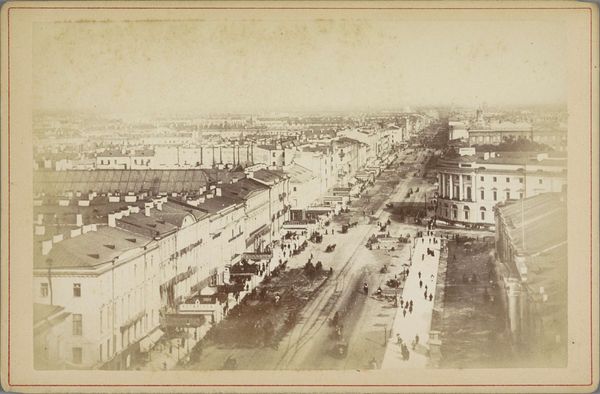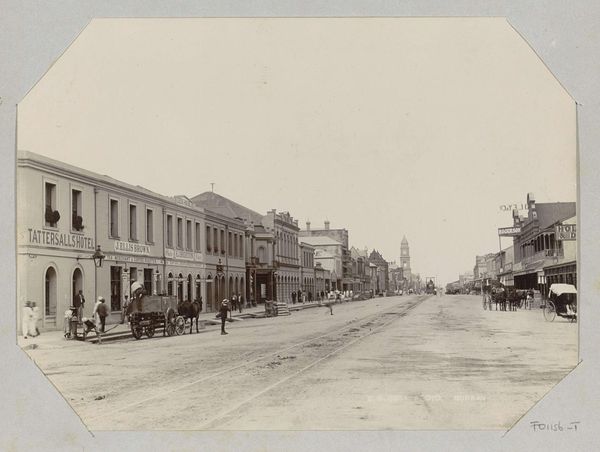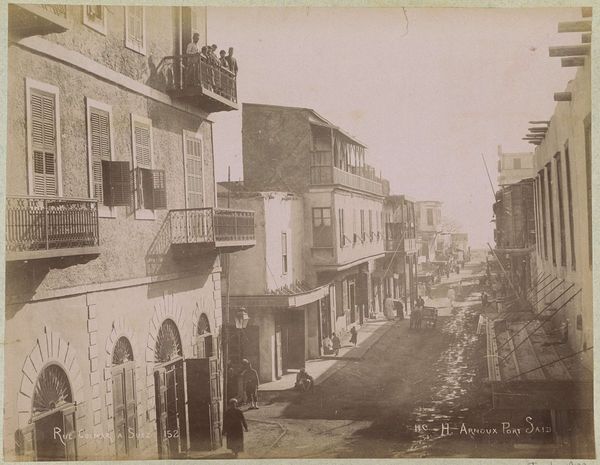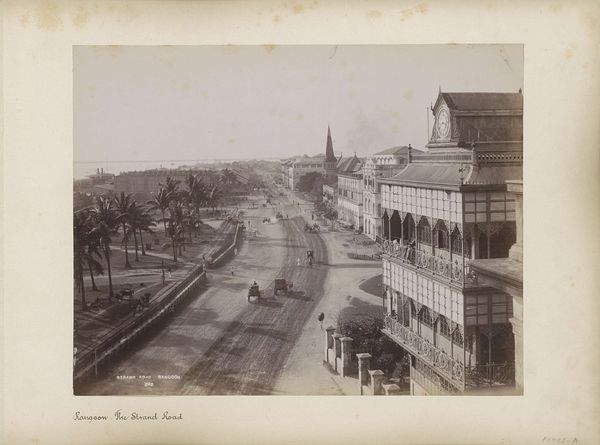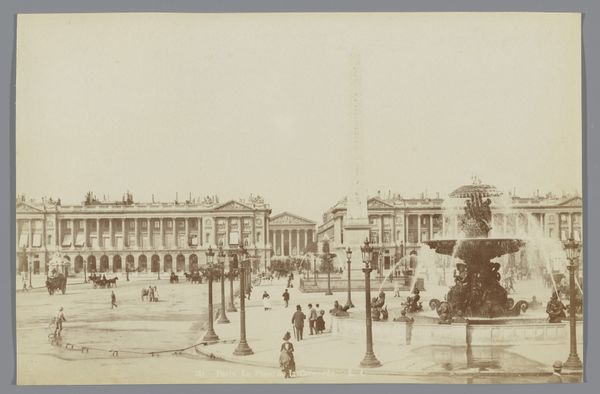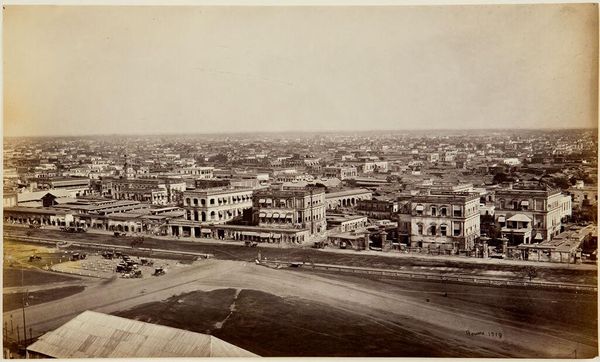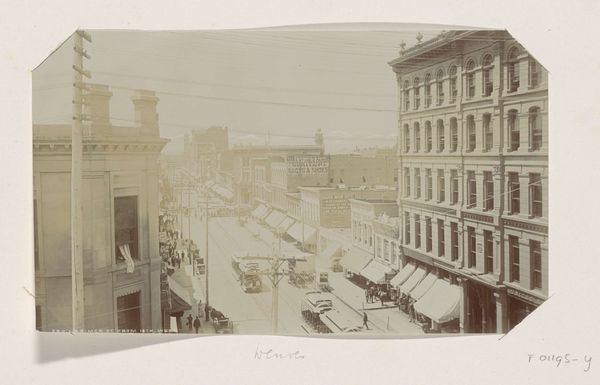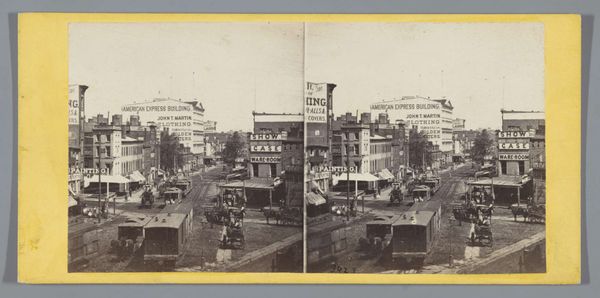![[Kitchen and Stables of Government House, Calcutta] by John Constantine Stanley](/_next/image?url=https%3A%2F%2Fd2w8kbdekdi1gv.cloudfront.net%2FeyJidWNrZXQiOiAiYXJ0ZXJhLWltYWdlcy1idWNrZXQiLCAia2V5IjogImFydHdvcmtzL2M5ZWVlMWRkLWMyZDktNDk5Ny1hOGU4LTlkZGQ4ZDkyMTY3Ny9jOWVlZTFkZC1jMmQ5LTQ5OTctYThlOC05ZGRkOGQ5MjE2NzdfZnVsbC5qcGciLCAiZWRpdHMiOiB7InJlc2l6ZSI6IHsid2lkdGgiOiAxOTIwLCAiaGVpZ2h0IjogMTkyMCwgImZpdCI6ICJpbnNpZGUifX19&w=3840&q=75)
[Kitchen and Stables of Government House, Calcutta] 1858 - 1861
0:00
0:00
photography, gelatin-silver-print
#
landscape
#
outdoor photo
#
photography
#
historical photography
#
orientalism
#
gelatin-silver-print
#
19th century
#
cityscape
#
realism
#
building
Dimensions: Image: 12.2 x 18.8 cm (4 13/16 x 7 3/8 in.) Mount: 33 x 26.2 cm (13 x 10 5/16 in.)
Copyright: Public Domain
Curator: At first glance, the sepia tone and symmetrical buildings in the photograph titled "[Kitchen and Stables of Government House, Calcutta]" lend it a strangely nostalgic quality. Editor: It definitely possesses a certain muted formality. I'm immediately drawn to the layers of architectural forms receding into the distance, the careful placement of each building creating depth and hierarchy. The repetitive geometry of the windows and colonnades echoes the ordered nature of colonial power, wouldn’t you agree? Curator: Undoubtedly. Created between 1858 and 1861, this gelatin-silver print by John Constantine Stanley captures a very specific moment in time, embedding cultural memory within the landscape of British colonial India. The vista speaks of imposed order and the assertion of imperial dominance through architectural projection. It suggests how the British sought to imprint their identity upon a foreign land. Editor: Yes, note how Stanley positions the viewer at a remove. We're looking *down* upon the scene. The relatively deserted street below only reinforces this sense of detachment and the controlling gaze inherent in colonial depictions. The artist constructs a world visually accessible yet socially distant. Curator: It reminds me how photography during this period often served as a tool of documentation, reinforcing pre-existing colonial power structures. While ostensibly objective, the images inevitably carried embedded cultural perspectives. Stanley would have sought to portray an air of serene administration and unflappable authority through carefully considered perspectives and subject matter. Editor: Absolutely. And Stanley's control of light and shadow contributes so much to the reading of the image. He masterfully uses light to draw out subtle architectural features. Also, observe how this starkness is only somewhat softened through the softness of the medium itself and age, reminding us this photograph isn't merely documentation, but a constructed representation of a space and time. Curator: It also offers a crucial lens through which we may contemplate themes of identity, power, and representation – challenging viewers to actively interpret colonial visuality and examine our own preconceptions when seeing such work. Editor: Agreed. Ultimately, it's an artwork that engages the viewer in an act of cultural archeology and demands deeper inquiry.
Comments
No comments
Be the first to comment and join the conversation on the ultimate creative platform.
